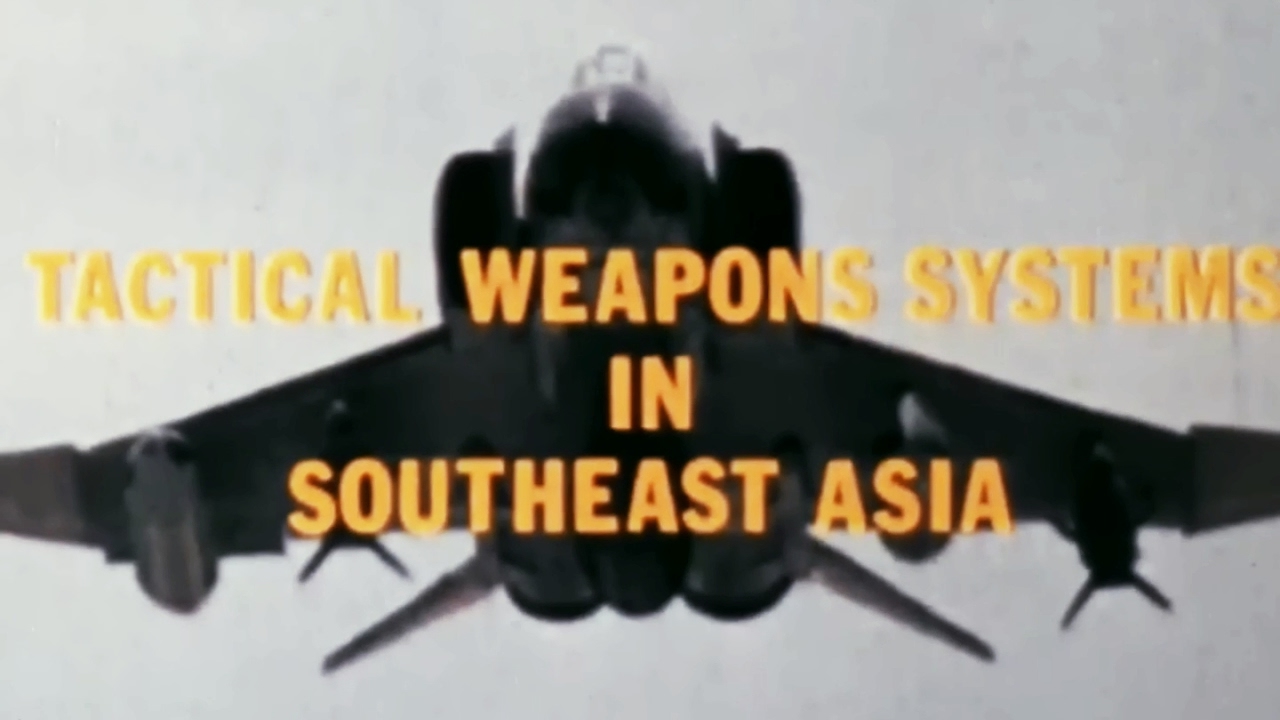Vietnam War playlist:
Tactical Air Command & Strategic Air Command playlist:
more at
Overview of the various combat tactical strike aircraft and weapons systems used late in the Vietnam War. Aircraft covered include the AC-130 gunships, F-4 Phantom, F-105 Thunderchief, F-111, and A-7D. Laser guided and television guided bombs are described.
USAF film FR-1400
Public domain film from the US Air Force, slightly cropped to remove uneven edges, with the aspect ratio corrected, and one-pass brightness-contrast-color correction & mild video noise reduction applied.
The soundtrack was also processed with volume normalization, noise reduction, clipping reduction, and/or equalization (the resulting sound, though not perfect, is far less noisy than the original).
A precision-guided munition (PGM, smart weapon, smart munition, smart bomb) is a guided munition intended to precisely hit a specific target, to minimize collateral damage and increase lethality against intended targets.
Because the damage effects of explosive weapons decrease with distance due to an inverse cube law, even modest improvements in accuracy (hence reduction in miss distance) enable a target to be attacked with fewer or smaller bombs. Thus, even if some guided bombs miss, fewer air crews are put at risk and the harm to civilians and the amount of collateral damage may be reduced.
The advent of precision-guided munitions resulted in the renaming of older bombs “unguided bombs”, “dumb bombs”, or “iron bombs”…
In 1962, the US Army began research into laser guidance systems and by 1967 the USAF had conducted a competitive evaluation leading to full development of the world’s first laser-guided bomb, the BOLT-117, in 1968. All such bombs work in much the same way, relying on the target being illuminated, or “painted,” by a laser target designator on the ground or on an aircraft. They have the significant disadvantage of not being usable in poor weather where the target illumination cannot be seen, or where a target designator cannot get near the target. The laser designator sends its beam in a coded series of pulses so the bomb cannot be confused by an ordinary laser, and also so multiple designators can operate in reasonable proximity.
Laser-guided weapons did not become commonplace until the advent of the microchip. They made their practical debut in Vietnam, where on 13 May 1972 they were used in the second successful attack on the Thanh Hóa Bridge (“Dragon’s Jaw”). This structure had previously been the target of 800 American sorties (using unguided weapons) and was partially destroyed in each of two successful attacks, the other being on 27 April 1972 using Walleyes.
They were used, though not on a large scale, by the British forces during the 1982 Falklands War. The first large-scale use of smart weapons came in the early 1990s during Operation Desert Storm when they were used by coalition forces against Iraq. Even so, most of the air-dropped ordnance used in that war was “dumb,” although the percentages are biased by the large use of various (unguided) cluster bombs. Laser-guided weapons were used in large numbers during the 1999 Kosovo War, but their effectiveness was often reduced by the poor weather conditions prevalent in the southern Balkans.
There are two basic families of laser-guided bombs in American (and American-sphere) service: the Paveway II and the Paveway III. The Paveway III guidance system is more aerodynamically efficient and so has a longer range, however it is more expensive. Paveway II 500-pound LGBs (such as GBU-12) are a cheaper lightweight PGM suitable for use against vehicles and other small targets, while a Paveway III 2,000-pound penetrator (such as GBU-24) is a more expensive weapon suitable for use against high-value targets. GBU-12s were used to great effect in the first Gulf War, dropped from F-111F aircraft to destroy Iraqi armored vehicles in a process referred to as “tank plinking.”…

